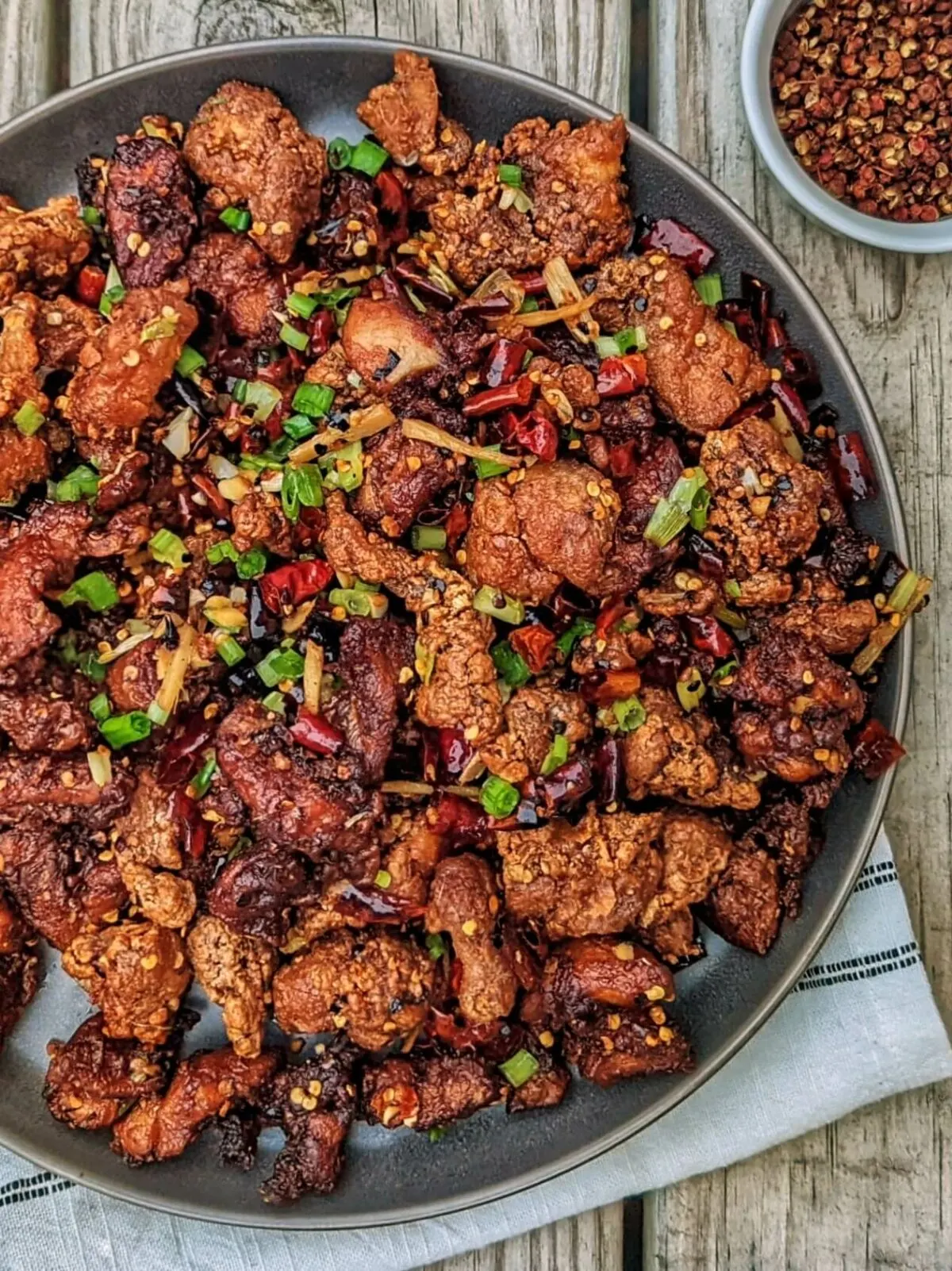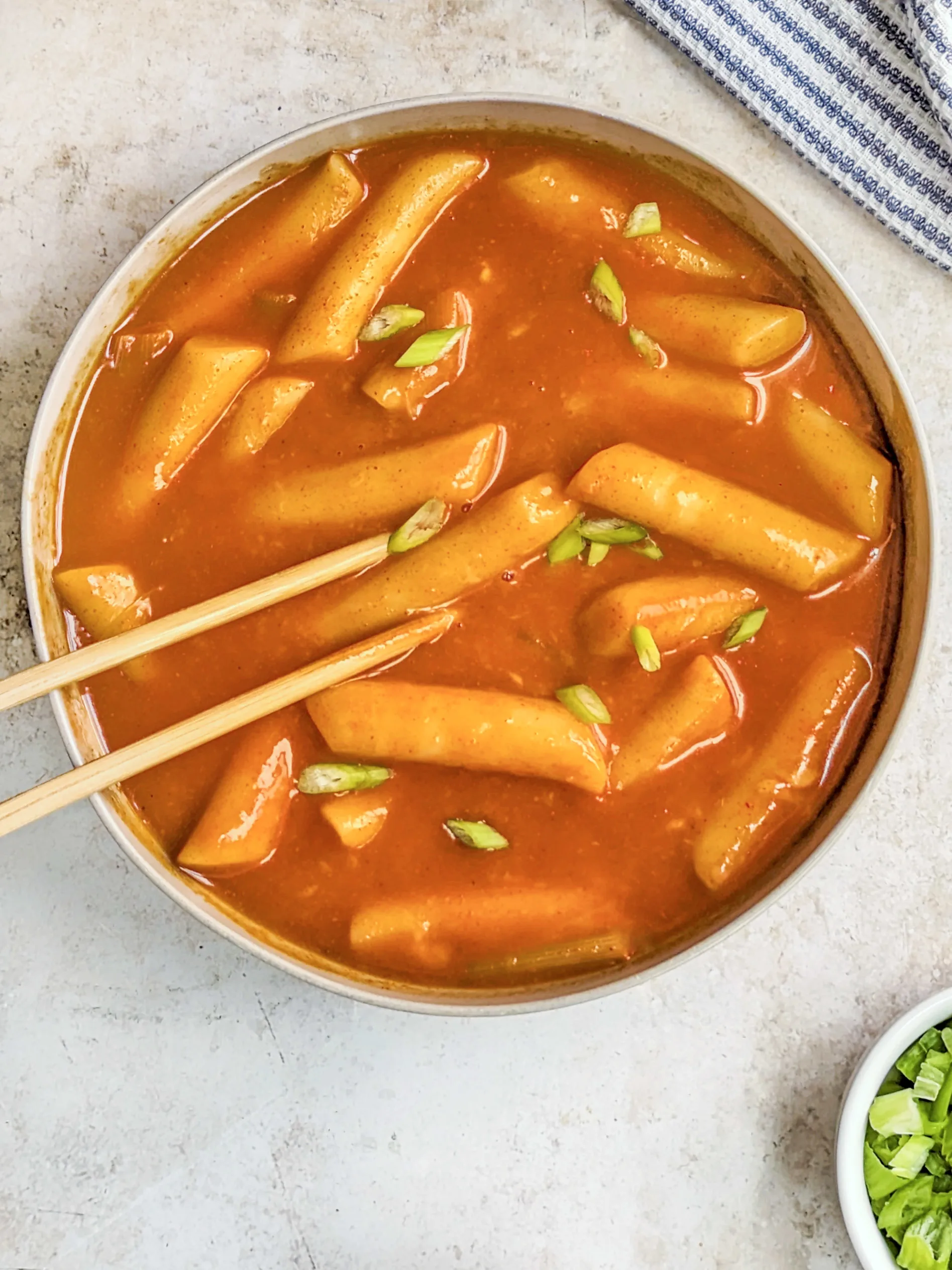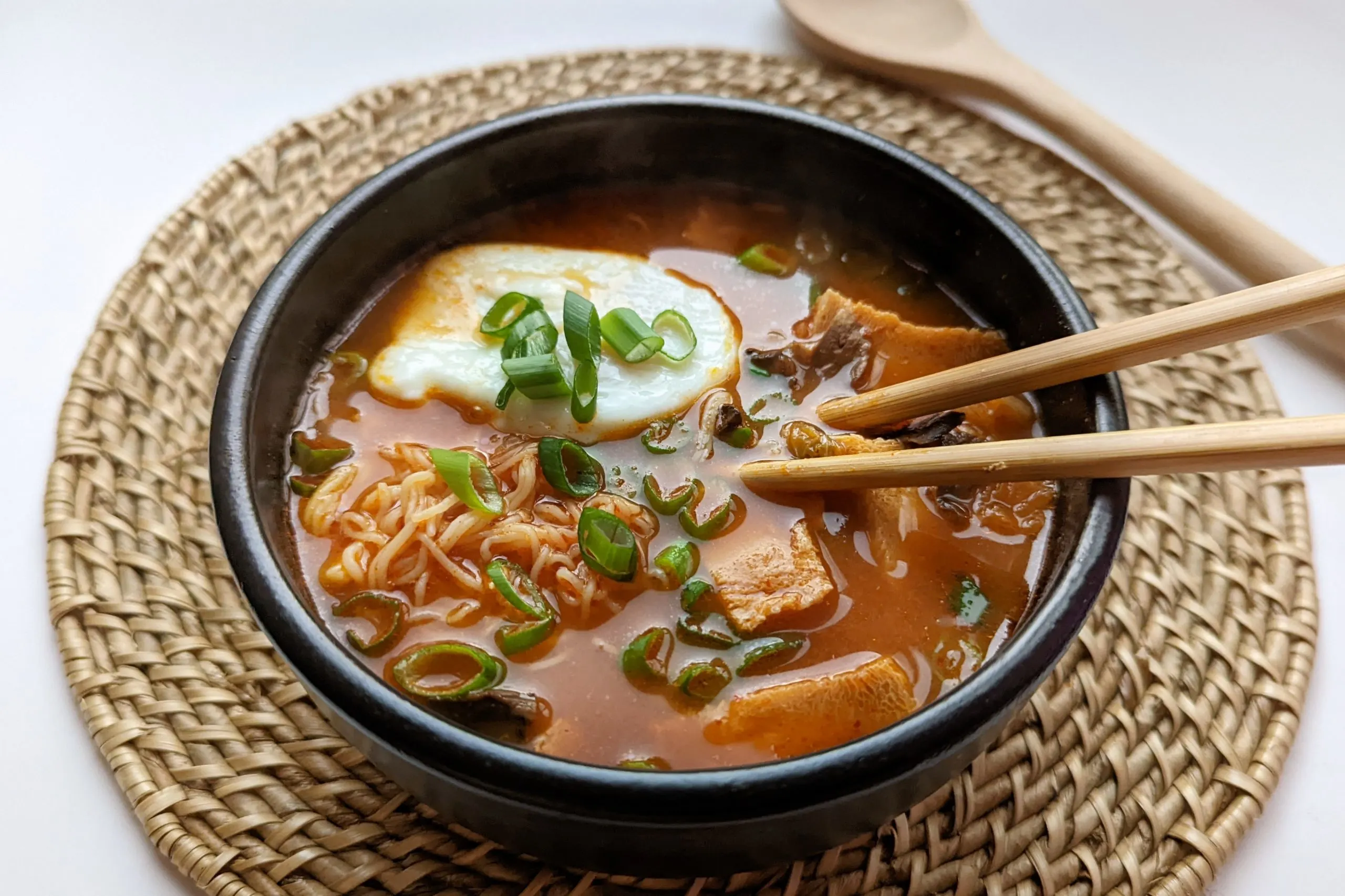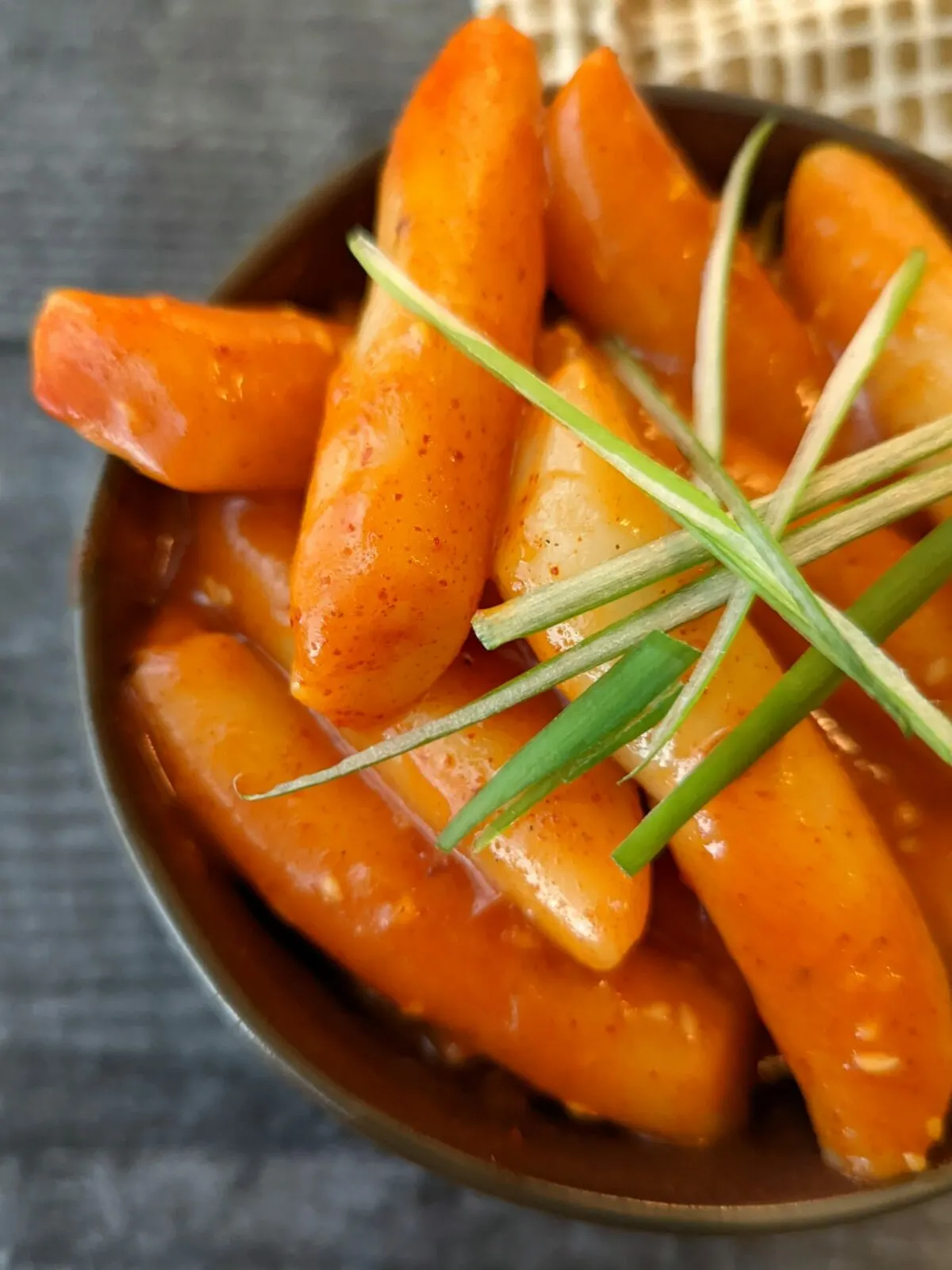Marked by a deep, red broth, our vegetarian kimchi jjigae is spicy and full of flavor! Thick cuts of firm tofu absorb the gochujang, gochugaru, and an umami-rich broth.
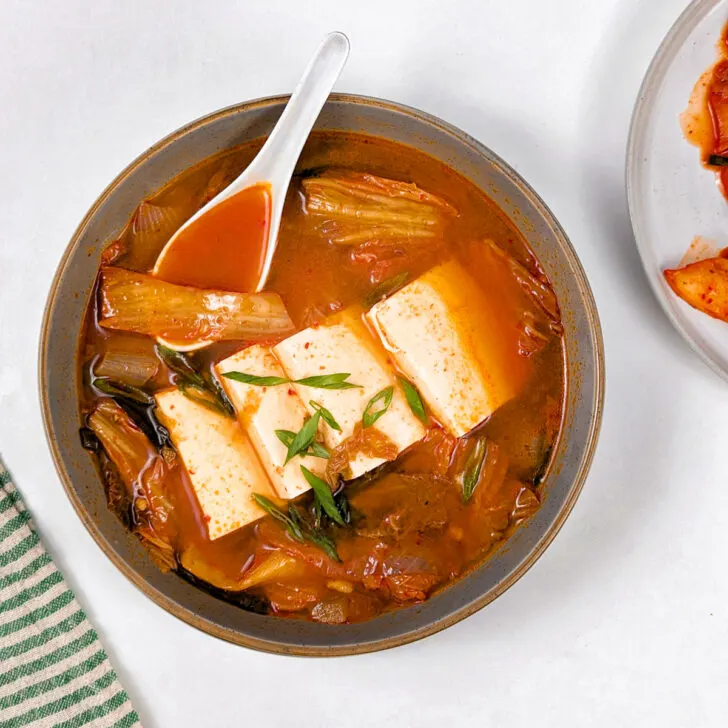
What You Need to Make this Recipe
- Vegetable Broth: Use homemade or store-bought vegetable broth or mushroom broth as the base for the soup.
- Kombu: Kombu is an edible seaweed or kelp; it comes in many forms, but we used rishiri kombu. You will find it in local Asian markets or online.
- Mushrooms: Use fresh shiitake mushrooms or dried shiitake mushrooms. I prefer dry mushrooms because they add nuttiness and umami to the broth as they rehydrate.
- Sesame Oil: Toasted sesame oil flavors the paste and adds silkiness to the soup.
- Soy Sauce: Add soy sauce to the paste.
- Gochugaru: Adding heat and a slightly smoky fragrance, dried and deseeded chili peppers are the main ingredients in another Korean staple called gochugaru, or Korean red pepper flakes. Check the container for spice levels since they usually come in mild, medium, or hot.
- Gochujang: A Korean pepper paste called gochujang is frequently used in Korean cuisine to add sweet heat to a recipe. The red pepper paste contains red pepper flakes, sticky rice, fermented soybean paste, and salt.
- Onion: Use white or yellow onions.
- Garlic: I suggest using three garlic cloves, but measure with your heart.
- Scallions: I use the white parts of the scallion (green onion) to flavor the broth, and the greens provide a nice peppery garnish.
- Kimchi: Guess what? Kimchi isn’t just a side dish in Banchan. It’s often the main ingredient for multiple recipes. When using kimchi to make stew, be sure it’s fermented and aged kimchi – the older, the better; this will increase the flavor of the jjigae. Also, be aware that some store-bought kimchi contains fish sauce, oyster paste, or shrimp paste, so be sure to inspect your kimchi before use if you want to keep the recipe vegetarian. You can also make your own homemade kimchi.
- Tofu: For traditional Korean cuisine, silken tofu (soondubu) is favored – especially in soups and stews. However, large, rectangular slices of medium-soft or firm tofu are standard for kimchi jjigae.
Additions and Substitutions
- If you prefer more kimchi flavor, consider adding 1-2 tablespoons of the kimchi liquid to the broth.
- Include vegetables like bok choy, sweet potato, carrots, napa cabbage, bean sprouts, or mushrooms such as enoki mushrooms or oyster.
- Tteokbokki (rice cakes) or ramyun (ramen) are a fun add-ins.
- Traditional kimchi jjigae recipes call for meat like pork belly, but you can add nutritional yeast or a hard-boiled or soft-boiled egg for additional protein.
How to Make Vegetarian Kimchi Jjigae
The full recipe with measurements is in the recipe card below.
Step 1: Add vegetable broth, kombu, and dried mushrooms (if using) to a saucepan. Cover and cook for 10-15 minutes over medium heat.
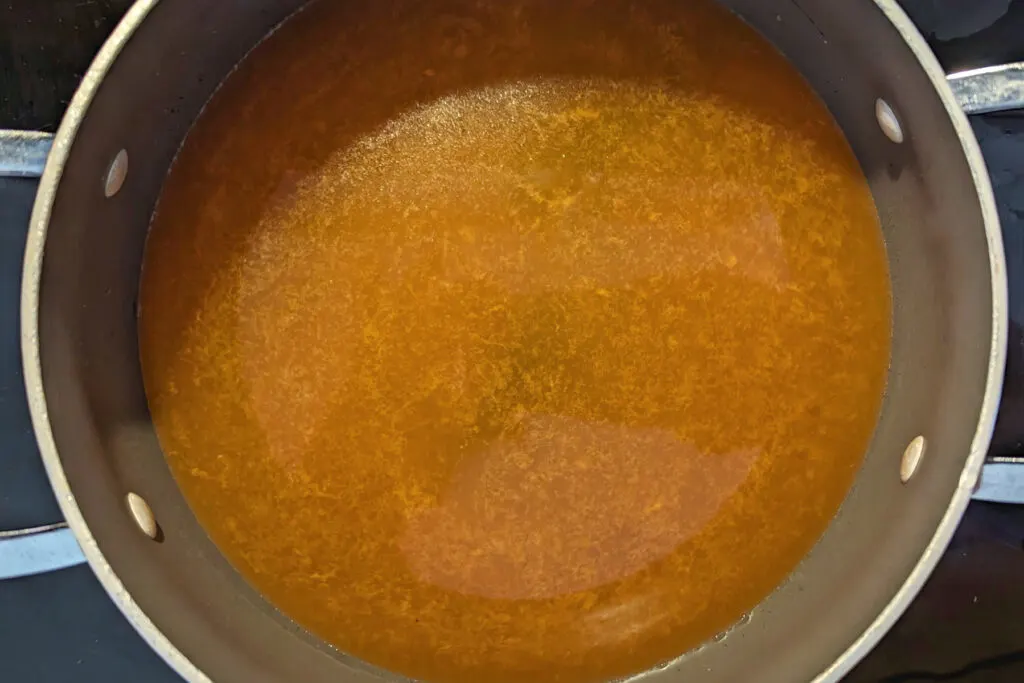
Step 2: While the broth cooks, combine sesame oil, soy sauce, gochugaru, gochujang, and ground black pepper in a small bowl. Set the paste aside.
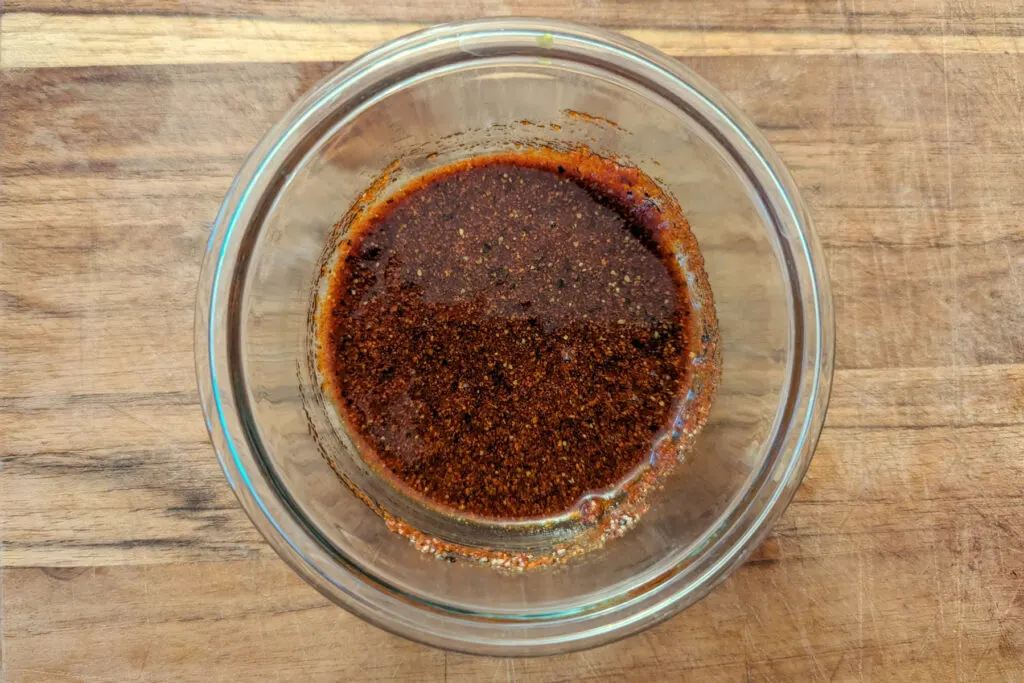
Step 3: Saute the kimchi in a small Dutch oven or earthenware pot until it softens. Set it aside.
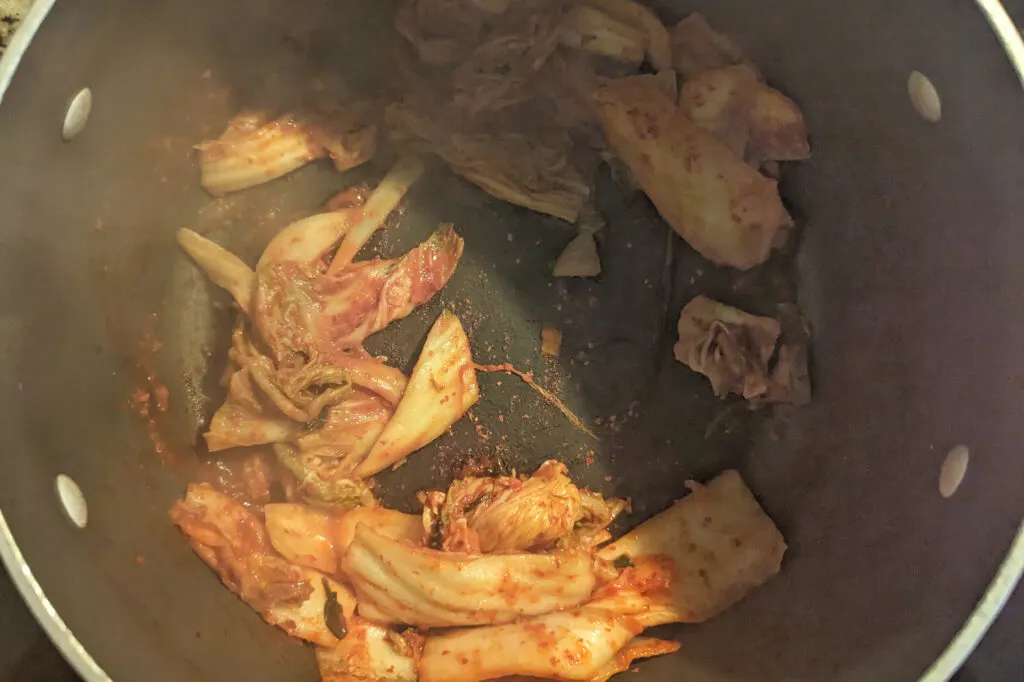
Step 4: Warm a neutral oil in the same pot over medium heat. Add the onion, garlic, and white scallion pieces. Cook until onions become translucent and soften for 8 minutes.
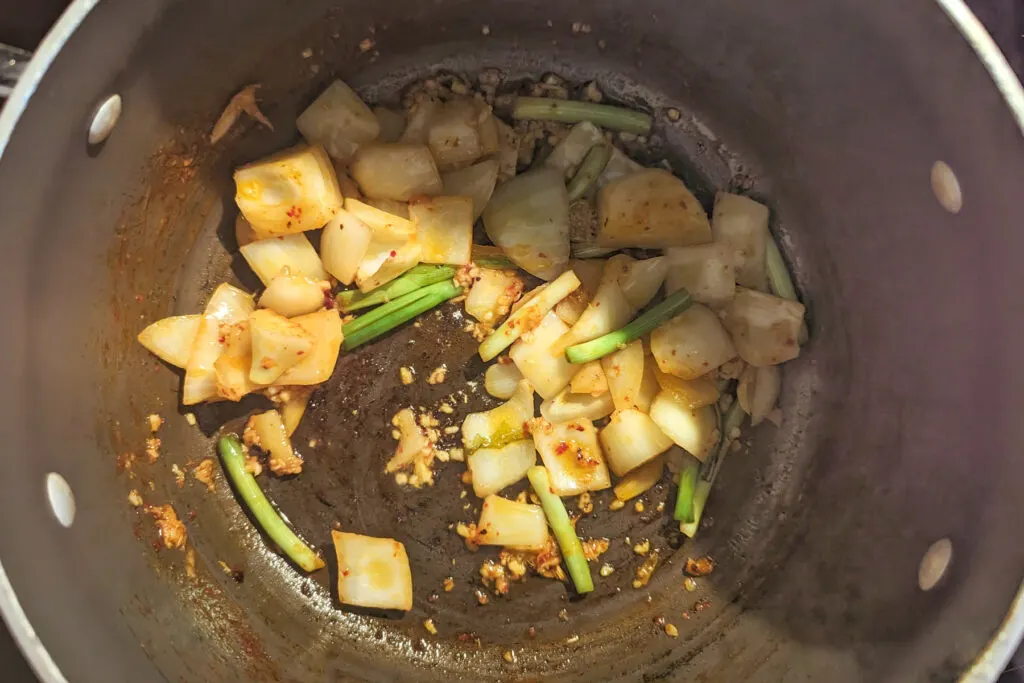
Step 5: Add the reserved stock. Cover and cook for 10 minutes. Remove the lid and stir in the reserved kimchi.
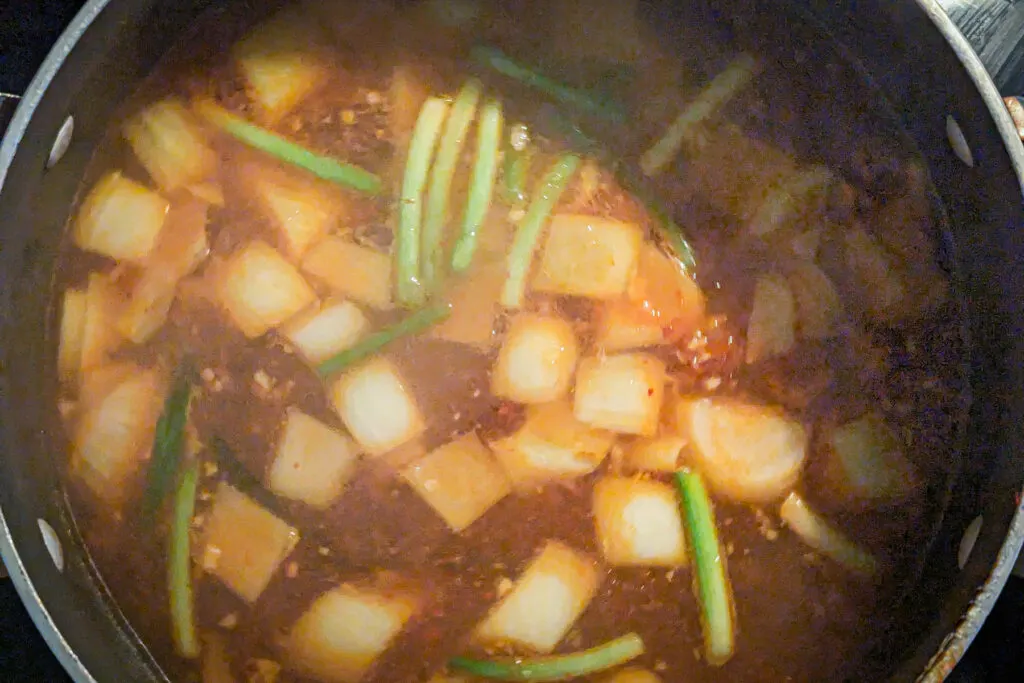
Step 6: Stir in the reserved paste and simmer for a few minutes before gently adding the tofu slices.
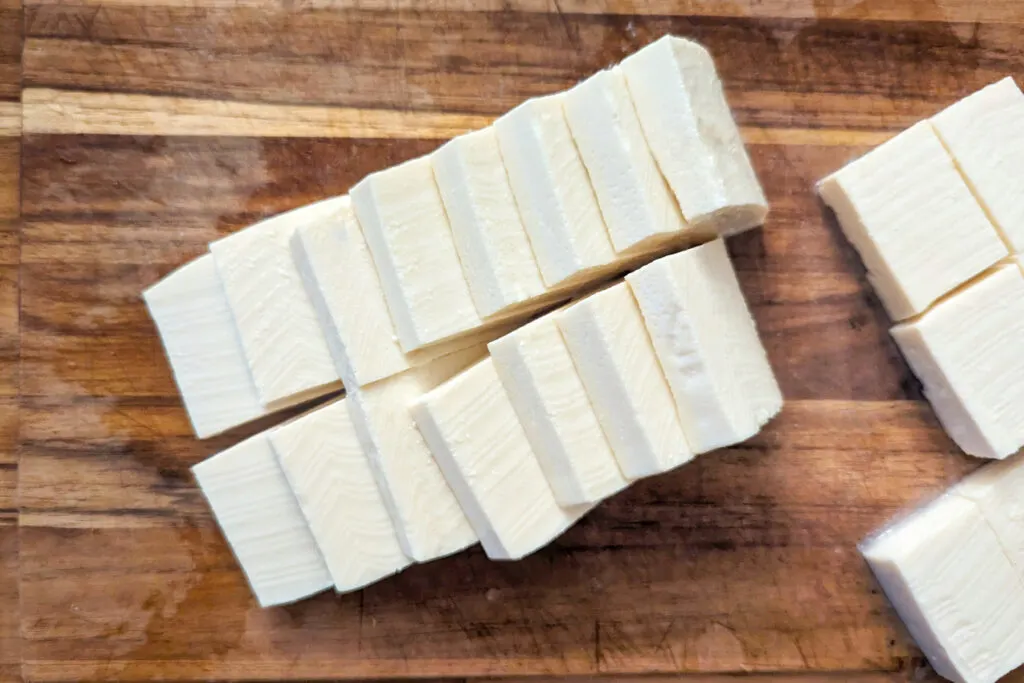
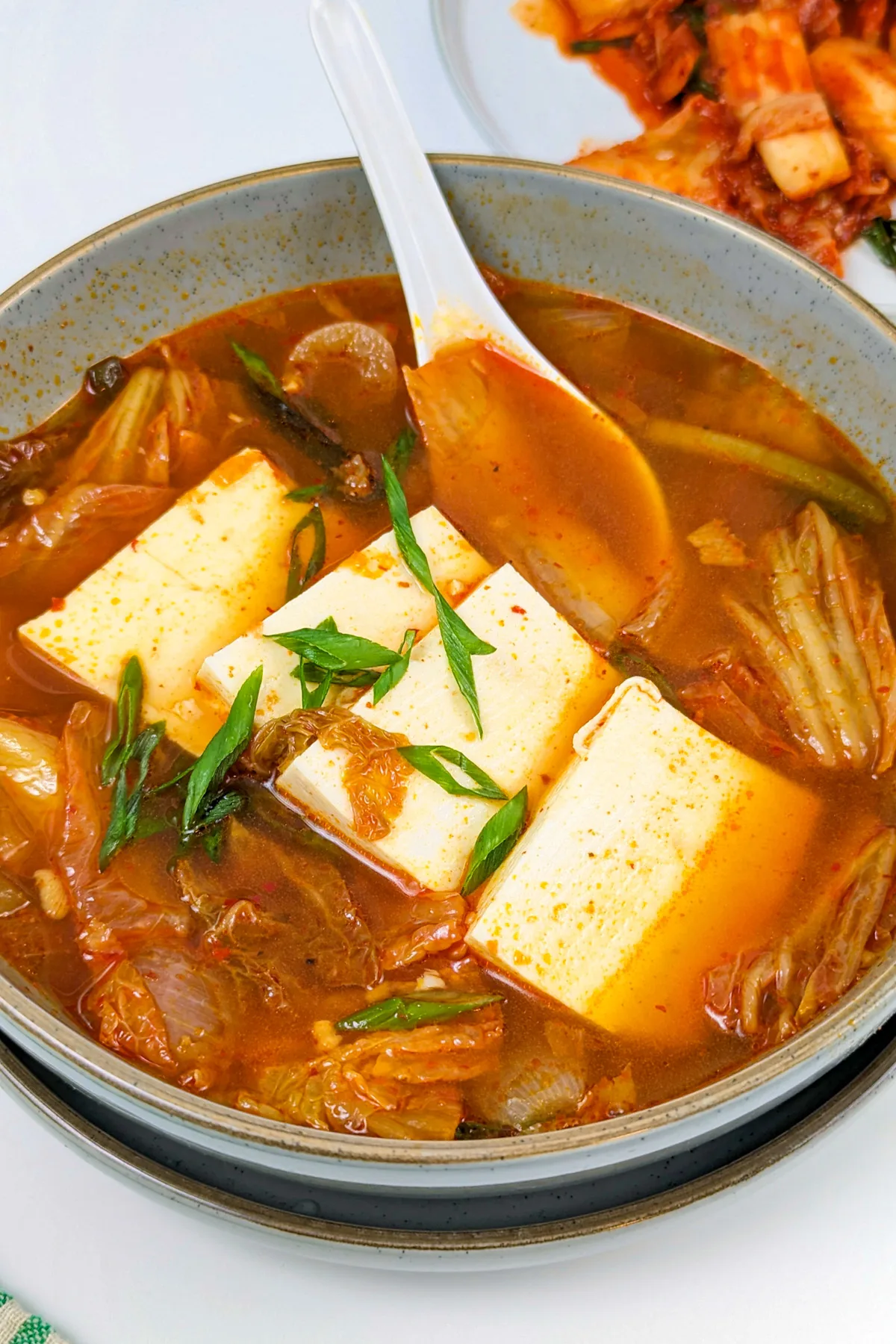
Expert Tips
- I learned from Hyosun over at Korean Bapsang that when using kimchi – the older is better. I find this to be especially true of jjigae to give the soup its distinct sourness.
- If you end up low on broth, you may have set the heat too high (tell me how I know that). While simmering, adjust the heat to maintain a gentle simmer and not a boil. To recover the broth, add water. Simmer until the water has taken on the flavor of the other ingredients.
Searching for More Like This?
If you love this recipe, try one of these dinner favorites!
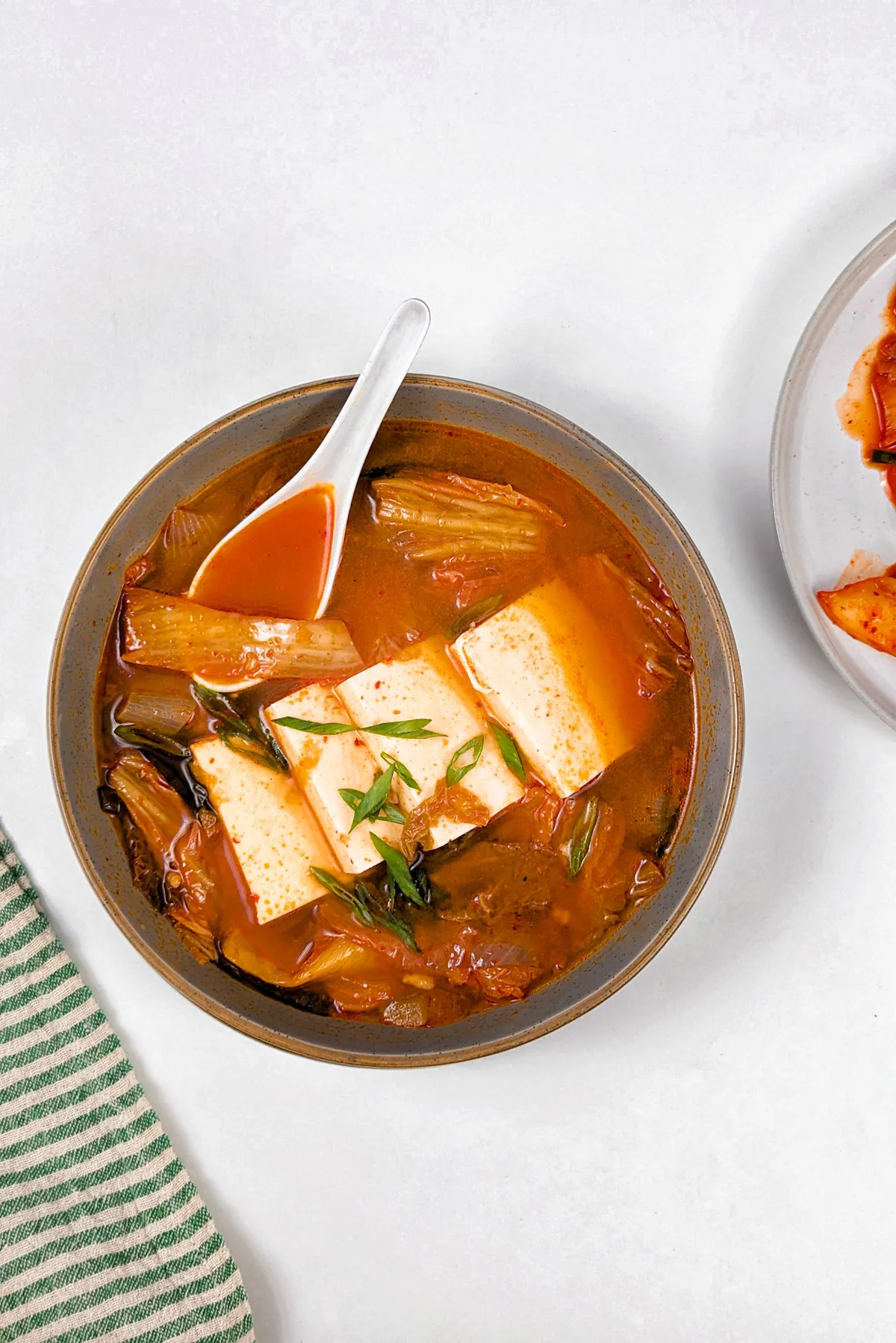
How to Serve Kimchi Jjigae
Ensure everyone at the table has a small bowl to serve themselves from the main pot to reflect the communal aspect of Korean dining. Serve kimchi chigae with a piping hot bowl of rice or side dishes like banchan, fish cakes, and kimchi.
What to do With the Leftovers
- Refrigerate – Store leftovers in an airtight container for 2-3 days.
- Freeze – Before freezing, remove the tofu. It doesn’t reheat well once frozen. Then, transfer the rest of the stew to a freezer-safe container or bag. Vegetarian kimchi jjigae freezes for up to 3 months.
- Thaw – Defrost the stew in the refrigerator overnight.
- Reheat – Warm leftovers on the stovetop, add fresh tofu to cook with it, and enjoy!
Frequently Asked Questions
How do I create a more traditional broth?
Traditional Korean broth relies heavily on ingredients such as anchovy broth, kelp, and daikon radish to create a delicious base for kimchi stew. Maangchi instructs viewers in a more traditional preparation. Since these ingredients can be hard to find, I use vegetarian staples from my pantry instead.
Can I sweeten the jjigae to balance the heat?
You sure can – add a pinch of sugar or honey to the broth! You can also stir in a teaspoon of homemade hoisin sauce.
Why is my broth coming out flat?
My guess is that you the kimchi wasn’t fermented long enough. This one ingredient can completely alter the stew! But since you have already made it, let’s do a little recon together. Consider adding salt, fysh sauce, or another dash of soy sauce.
More International Dinner Ideas:

Vegetarian Kimchi Jjigae
- Small Bowl
- 6 cups vegetable broth
- 2-3 pieces kombu (2-inch)
- 1 cup dried shiitake mushrooms, optional
- 1 teaspoon sesame oil
- 1 tablespoon soy sauce
- 2 tablespoons gochugaru
- 1 tablespoon gochujang
- ¼ teaspoon black pepper, coarse ground
- 1 tablespoon neutral oil
- 1 small white onion, coarsely chopped
- 3 cloves garlic, minced
- 8 scallions, whites, and greens separated, whites cut in 1-inch pieces, and greens thinly sliced
- 1 cup kimchi
- ½ package medium soft to firm tofu, sliced into thick rectangles
- Add vegetable broth, kombu, and dried mushrooms (if using) to a saucepan. Cover and cook for 10-15 minutes over medium heat, adjusting the temperature to maintain a gentle boil. Set the broth aside.
- While the broth cooks, combine sesame oil, soy sauce, gochugaru, gochujang, and ground black pepper in a small bowl. Set the paste aside.
- Saute the kimchi in a small Dutch oven or earthenware pot until it softens. Set it aside.
- Warm a neutral oil in the same pot over medium heat. Add the onion, garlic, and white scallion pieces. Cook until onions become translucent and soften for 8 minutes.
- Add the reserved stock. Cover and cook for 10 minutes. Remove the lid and stir in the reserved kimchi.
- Stir in the reserved paste and simmer for a few minutes before gently adding the tofu slices.
- I learned from Hyosun over at Korean Bapsang that when using kimchi – the older is better. I find this to be especially true of jjigae to give the soup its distinct sourness.
- If you end up low on broth, you may have set the heat too high (tell me how I know that). While simmering, adjust the heat to maintain a gentle simmer and not a boil. To recover the broth, add water. Simmer until the water has taken on the flavor of the other ingredients.
- The nutritional information shown is an estimate provided by an online nutrition calculator. It should not be considered a substitute for professional advice.

